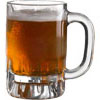- Introduction to cancer and alcohol
- Alcohol consumption in Australia
- What is cancer?
- Associations between alcohol consumption and cancer
- How does alcohol consumption cause cancer?
- Benefits of responsible drinking
- Strategies for reducing alcohol consumption
Introduction to cancer and alcohol

The Australian Cancer Council (ACC) recommends that men consume no more than two standard drinks per day, and women no more than one standard drink per day, to reduce the risk of cancer. This is half the amount of alcohol recommended to avoid the broader health risks of alcohol consumption. In addition, the ACC recommends people avoid “binge drinking” (i.e. drinking until they are intoxicated) and have one or two alcohol free days per week.
Alcohol consumption in Australia
Alcohol consumptionis common in Australia. Many women and men consume, on average, more than one or two standard drinks per day. The 1998 National Drug Strategy Household Survey found that 80% of respondents over 14 years of age reported being current alcohol drinkers, with 49% reporting that they drank at least once a week. 15% of men and 6% of women reported drinking every day. Men were more likely to drink alcohol than women. Non-Indigenous Australians were more likely to drink compared to Indigenous Australians; however, Indigenous Australian drinkers were more likely to drink at harmful levels (according to the NHMRC guidelines) than non-Indigenous drinkers.
Consumption of excessive amounts of alcohol in Australia is common, particularly in young men (18–24 years old) and Indigenous Australians. It is estimated that 39% of all alcohol consumed in Australia is done so at levels exceeding the NHMRC guidelines for maintaining general health. Of all alcohol consumed by men aged 18–24, 93% is consumed in moderate or high risk quantities. Amongst Indigenous Australians who drink (62% of all Indigenous Australians) some 68% report drinking quantities of alcohol considered harmful to ones general health and wellbeing.
As the general guidelines allow consumption of more alcohol than the cancer guidelines, the proportion of people drinking alcohol in quantities that create a risk for cancer is even greater than this. More than 6% of Australians suffer from alcohol consumption disorders which can be classified as alcohol dependence (commonly known as alcoholism) and alcohol intoxication (commonly known as binge drinking) disorders.
What is cancer?
Cancer occurs when cells within the body continually replicate without structure or organisation. Normally, cell replication is highly regulated and cells divide only as necessary. In healthy human organs, there is an exact balance between the number of cells replicating and the number of cells dying. However, when cells are cancerous and continually replicate, more new cells are produced than the number that die. This leads to an excessive number of cells, which eventually invade healthy human organs and form a tumour.
A tumour is an abnormal swelling or growth of tissue. Tumours can be either benign or malignant. Benign tumours remain within a single organ or tissue and are generally safe; they are not considered cancerous. Malignant tumours, on the other hand, are able to move from one site or organ in the human body (e.g. the lung) to another (e.g. breast) – they have the ability to invade numerous healthy organs in different parts of the body. The process of moving around the body is known as metastasis. Tumours that are able to metastasise are cancerous.
Cancerous tumours are usually classified according to the size of the tumour, its position relative to lymph nodes, and whether or not the tumour is invading other organs of the body (i.e. the presence or absence of metastasis). This classification system helps medical practitioners decide which treatment approach is best, as well as determine the likelihood of treatment being successful. Tests such as x-rays and CT will usually give enough information for doctors to classify the stage of cancer growth. In some cases, it will also be necessary to examine a piece of the tumour to properly classify it. This generally requires surgery to remove a piece of the tumour.
Associations between alcohol consumption and cancer

It is important to bear in mind that the risk of developing some cancers increases even in individuals who drink alcohol moderately. For example, women who drink one standard drink per day have a small but definitely increased risk of breast cancer. The risk of developing cancer also increases with the average amount of alcohol consumed (e.g. women who drink four standard drinks per day are more likely to develop breast cancer than those that drink one, two or three standard drinks.)
Alcohol consumption, particularly in amounts exceeding the ACC guidelines, can increase the chance that an individual will develop cancers of the:
- Upper aerodigestive tract, including oral cavity (mouth), larynx, pharynx (throat) and oesophagus (food pipe)
- Colon and rectum (bowel)
- Liver
- Breast
In Australia, alcohol accounts for 3.1% of the total burden of cancer, or, in other words, 3.1% of all cancer related illness and death in Australia is a result of alcohol consumption. This is equivalent to about 2850 people being diagnosed with cancer each year, and 1350 people dying as a result of it.
How does alcohol consumption cause cancer?

Benefits of responsible drinking
The health benefits of reducing alcohol consumption are diverse and numerous. In addition to a reduced risk of developing cancer, reduced alcohol consumption reduces the risk of:
- Sexually transmitted infections (STIs)
- Sexual dysfunction (particularly erectile dysfunction in men, but also female sexual dysfunction)
- Liver cirrhosis
- Brain damage
- Gastrointestinal diseases
- Cardiovascular disease
- Dementia
- Infertility
- Anaemia
- Anxiety and stress
- Depression
- Stroke
- Suicide
To reduce cancer risk, it is recommended that individuals limit alcohol consumption to two standard drink per day for men, and one standard drink per day for women. As a general rule, the less you drink, the lower your risk of cancer.
It is not clear at what stage of life alcohol consumption most influences risk of cancer. Therefore, it is not known whether individuals who reduce drinking later in life can significantly reduce their risk of cancer.
Strategies for reducing alcohol consumption

If you do drink more than is recommended in the ACC guidelines, you may want to develop strategies for reducing the amount of alcohol you consume. Health professionals can help if you are having difficulty. You may begin by:
- Substituting alcoholic beverages with other drinks
- Alternating between alcoholic and non-alcoholic drinks when at a party or social gathering
- Not drinking alcohol every day
In addition you may wish to:
- Screen for commonly occurring cancers which have an increased risk associated with alcohol (e.g. breast cancer).
- Take multivitamins to reduce the chance of nutrient deficiencies. Remember, though, that many nutrient supplements have not been proven effective and consuming excessive amounts of vitamins can be dangerous.
- Reduce tobacco consumption which further increases the risk of some cancers when consumed with alcohol.
If you try to limit the amount you drink but have difficulty, do not be afraid to seek professional help. Alcohol consumption problems may get worse over time and are most easily treated in the early stages.
More information
 |
For more information on drinking alcohol, including drinking disorders and alcohol’s effect on the body, as well as some useful tools, see Alcohol. |
References
- NHMRC. Australian alcohol guidelines: Health risks and benefits [online]. Commonwealth of Australia. 2001 [cited 30 July 2008]. Available from URL: www.nhmrc.gov.au/ publications/ synopses/ ds9syn.htm
- Cancer Council of Australia. Position statement: Alcohol and cancer [online]. 2008 [cited 30 July 2008]. Available from URL: http://www.cancercouncil.com.au/ html/ healthprofessionals/ nutrition_physical/ downloads/ positionstatement_alcohol_cancer.pdf
- Australian Institute of Health and Welfare. 1998 National Drug Strategy Household Survey, First Results, 1999, AIHW cat. No. PHE 15, Drug Statistics Series, AIHW, Canberra.
- Stockwell T, Heale P, Dietze P, et al. Patterns of alcohol consumption in Australia, 1998. National Alcohol Indicators, Technical Report No. 3. Perth: National Drug Research Institute, Curtin University of Technology, 2001.
- King E, Taylor J, Carroll T. Alcohol consumption patterns among Australia 15–17 year olds from 2000–2004: Research Report [online]. 2005 [cited 30 July 2008]. Department of Health and Ageing, Government of Australia. Available from URL: www.alcohol.gov.au
- Delia D, Buscemi G. Regulation of the cell cycle, cell cycle checkpoints and cancer. In: Martin A [ed]. The Cancer Handbook [Electronic Resource]. London: Wiley, 2007 [cited 30 July 2008]. Available from URL: http://www3.interscience.wiley.com/
- Pierobin M, Geho D, Belluco C, Liotta L. Invasion and metastasis. In: Martin A [ed]. The Cancer Handbook [Electronic Resource]. London: Wiley, 2007 [cited 30 July 2008]. Available from URL: http://www3.interscience.wiley.com/
- Greene FL, Page DL, Fleming ID, Fritz AG, Balch CM, et al [eds]. American Joint Committee on Cancer Staging Manual. 6th ed. New York: Springer, 2002.
- Boffetta P, Hashibe M. Alcohol and cancer [Review]. Lancet Oncology. 2006; 7(2): 149-56.
- Seitz HK, Becker P. Alcohol metabolism and cancer risk. Alc Res Health. 2007; 37(1): 38-48.
- Cho E, Smith-Warner SA, Ritz J, et al. Alcohol intake and colorectal cancer: A pooled analysis of 8 cohort studies. Ann Int Med. 2004; 140(8): 603-13.
- Moskal A, Norat T, Ferrari P, Riboli E. Alcohol intake and colorectal cancer risk: A dose-response meta-analysis of published cohort studies. Int J Cancer. 2007; 120(3): 664-71.
- McKillop IH, Schrum LW. Alcohol and liver cancer [Review]. Alcohol. 2005; 35(3): 195-203.
- Voigt MD. Alcohol in hepatocellular cancer. [Review]. Clinics in Liver Disease. 2005; 9(1): 151-69.
- Smith-Warner SA, Spiegelman D, Yaun SS, et al. Alcohol and breast cancer in women: A pooled analysis of cohort studies. JAMA. 1998; 279(7): 535-40.
- Genkinger JM, Hunter DJ, Spiegelman D. Alcohol intake and ovarian cancer risk: A pooled analysis of 10 cohort studies. Brit J Cancer. 2006; 94(5): 757-62.
- Ansems TM, van der Pols JC, Hughes MC, et al. Alcohol intake and risk of skin cancer. Eur J Clin Nut. 2008; 62(2): 162-70.
- Shimazu T, Tsuji I, Inoue M. Alcohol drinking and gastric cancer risk: An evaluation based on a systematic review of epidemiologic evidence among the Japanese population. Jap J Clin Onc. 2008; 38(1): 8-25.
- Ashworth M, Gerada C. ABC of mental health – Addition and dependence II: Alcohol. [Clinical review]. BMJ. 1997; 315: 358-60.
- Shand F, Gates J. Treating alcohol problems: Guidelines of general practitioners [online]. Australian Government Department of Health and Ageing. 2004 [cited 30 July 2008]. Available from URL: www.alcohol.gov.au/ internet/ alcohol/ publishing.nsf/ Content/ AAG10
All content and media on the HealthEngine Blog is created and published online for informational purposes only. It is not intended to be a substitute for professional medical advice and should not be relied on as health or personal advice. Always seek the guidance of your doctor or other qualified health professional with any questions you may have regarding your health or a medical condition. Never disregard the advice of a medical professional, or delay in seeking it because of something you have read on this Website. If you think you may have a medical emergency, call your doctor, go to the nearest hospital emergency department, or call the emergency services immediately.







